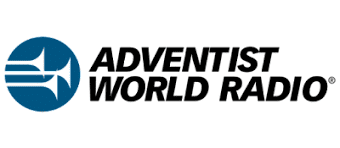It was back three quarters of a century ago that three luxury passenger liners were built at two different shipyards in Japan. These three ships joined NYK, the Nippon Yusen Kaisha Company for passenger service across the Pacific between Asia and the United States.
These three ships were all built around the same time, during the years 1929 and 1930. They all served in the luxury tourist trade in the Pacific, and occasionally beyond. All three were requisitioned into the Japanese navy in 1941, they each served as troop carriers in the Pacific, they participated in high profile diplomatic exchange events, they served as carriers for prisoners of war, and each of these ships carried new wireless equipment. In the tragic events during the middle of last century, all three ships were sunk by torpedo action from prowling submarines.
The Asama Maru was launched in 1929 from the Mitsubishi Shipyards at Nagasaki as a super quality luxury passenger liner specifically for Pacific passenger traffic between Japan and the United States. On several occasions, this ship carried noted political leaders attending important meetings in different parts of the world.
In 1933, Matsuoke Yosuke, the Japanese delegate to the League of Nations meeting in Geneva, Switzerland returned across the Pacific on the Asama Maru. As they were nearing Yokohama Harbor, Matsuoka was invited to make a radio broadcast to the nation of Japan from the ship. This broadcast was picked up by NHK Japan and relayed live on mediumwave throughout the nation. When the ship berthed at Yokohama Harbor, the NHK representative from station JOAK in Tokyo met the League of Nations delegate for another radio interview.
Two years later, this same Asama Maru was berthed at San Francisco in California and an important luncheon was staged aboard by the local Junior Chamber of Commerce. One of the prominent mediumwave stations in San Francisco, station KJBS with 500 watts on 1070 kHz, arranged for a live broadcast of the event.
A landline carried the proceedings from the berthed ship to the radio station. The date for this auspicious occasion was July 31, 1935, and the purpose for the broadcast from the Asama Maru was to publicize the events associated with the upcoming Harbor Day, the sixth such event at San Francisco.
The sister ship Chichibu Maru was built and launched at the Yokohama Shipyards in 1930 and the international radio callsign for this ship was JFZC. In 1936, this ship was noted in communication with K6XO at the RCA shortwave station located at Kahuku on the northern tip of the Hawaiian island of Oahu.
In the year 1938, the Chichubu Maru was listed among several passenger vessels that were noted as presenting occasional radio broadcast programs. As the custom was in those days, occasional broadcasts were presented from the ship, for a pick-up relay of programming by nearby land based mediumwave stations, and sometimes simply for direct reception by any shortwave listener who happened to tune in.
The third NYK sister ship, the Tatsuta Maru, was launched at the Mitsubishi Shipyards in Nagasaki in 1930, and its allotted callsign was JFYC. It would appear that the ships under the flag of the Nippon Yusen Kaisha company shared similar callsigns, with the J standing for Japan, the F for the company, the final letter C perhaps standing for the word company or commercial, and the third letter in the four letter sequence identifying the particular ship.
During the year 1940, conflict was active in continental Europe, and tensions were growing in the Pacific. It so happened that there were several mediumwave stations on the air in Shanghai in China that were operated by parties representing many different countries.
The American station XMHA was on the air with three transmitters on both mediumwave and shortwave and its programming was heard far and wide. Station listings from that era show that XMHA was on the air mediumwave with 500 watts on 600 kHz and 100 watts on 1100 kHz, and on shortwave with 1 kW on 11980 kHz.
According to Time magazine, and other news reports also, the Japanese government in Tokyo ordered all passenger ships and navy vessels to jam the broadcasts from station XMHA when their ship was in the vicinity of Shanghai. Contemporary monitoring reports state that the jamming signals sounded like a loud squeal.
Shipping schedules show that the one year old Katori class light cruiser, Kashima, was in Shanghai Harbor for a state visit right at the time when the jamming signals were noted. It is quite probable that the jamming signals at that particular time actually emanated from the radio equipment aboard the Japanese navy vessel, the Kashima.
There are no known QSLs for any of the broadcasts from any of the Japanese ships during the 1930s and the early 1940s.
From: Wavescan N64 – May 16, 2010
 “Wavescan” is a weekly program for long distance radio hobbyists produced by Dr. Adrian M. Peterson, Coordinator of International Relations for Adventist World Radio. AWR carries the program over many of its stations (including shortwave).
“Wavescan” is a weekly program for long distance radio hobbyists produced by Dr. Adrian M. Peterson, Coordinator of International Relations for Adventist World Radio. AWR carries the program over many of its stations (including shortwave). 